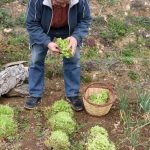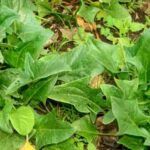Container gardening is an increasingly popular option for those who want to grow their own vegetables, but may not have access to a traditional garden space. Gardening in containers allows people to grow a variety of vegetables in a small area, making it perfect for urban dwellers or those with limited outdoor space.
In this article, we will explore the world of container vegetable gardening, from the benefits and challenges to selecting the right containers and ideal vegetables for this method.
When it comes to gardening in containers, there are numerous advantages that appeal to both experienced gardeners and beginners. People who live in apartments or homes with limited outdoor space can still enjoy gardening by utilizing containers.
For those with physical limitations, such as mobility issues or back problems, container gardening can be a more accessible way to cultivate vegetables. Additionally, the versatility of container gardening allows individuals to move their plants around to take advantage of sunlight or protection from harsh weather conditions.
To get started with container vegetable gardening, it’s important to understand how to choose the right containers and select the best vegetables for this method. The size, material, drainage capabilities, and aesthetic appeal of containers are all important factors to consider when embarking on this type of gardening.
Furthermore, certain vegetables thrive in containers while others may require more space or specific growing conditions. By learning about these considerations and tips for success in container vegetable gardening, anyone can create a thriving mini-garden filled with fresh produce.
Benefits of Container Gardening for Vegetables
Container gardening for vegetables offers numerous benefits for individuals looking to grow their own produce in limited space. Here are some of the advantages of container gardening:
1. Space-saving: Container gardening allows individuals with limited outdoor space, such as apartment dwellers or urban residents, to grow their own vegetables without the need for a traditional garden plot.
2. Accessibility and convenience: Containers can be placed on patios, balconies, or even indoors, making it easier for gardeners to tend to their plants and harvest their produce without having to travel far from home.
3. Pest and weed control: Since containers are elevated off the ground, they’re less susceptible to pests and weeds, reducing the need for harmful chemical pesticides and herbicides.
4. Mobility: Containers can be easily moved around to take advantage of sunlight or protect plants from harsh weather conditions, giving gardeners more control over their growing environment.
5. Aesthetically pleasing: Container gardens can add visual interest and beauty to any outdoor space with an endless variety of designs and arrangements. This makes them popular choices for adding greenery and color to balconies or small gardens.
With these benefits in mind, it’s no wonder that more and more people are turning to container vegetable gardening as a convenient and sustainable way to grow their own fresh produce at home.
Choosing the Right Containers for Vegetable Gardening
When it comes to choosing the right containers for vegetable gardening, there are a few important factors to consider. The size of the container is crucial, as it will determine the amount of space your vegetables have to grow their roots. Vegetables like tomatoes and peppers require larger containers, while smaller plants like lettuce and herbs can thrive in smaller pots.
In addition to size, the material of the container is also important. Plastic, clay, or wood containers are all viable options, but each has its own set of pros and cons. Plastic containers are lightweight and retain moisture well, but they can deteriorate over time when exposed to sunlight.
Clay pots are breathable and aesthetically pleasing, but they can be heavy and prone to cracking in freezing temperatures. Wood containers are good for insulation and drainage, but they may rot over time.
It’s also essential to consider drainage when choosing containers for vegetable gardening. Proper drainage is crucial for preventing waterlogged soil, which can lead to root rot and other issues. Ensure that your chosen containers have enough drainage holes at the bottom or that you can easily drill them yourself. This will help maintain healthy soil conditions for your vegetables, ensuring optimal growth and yield.
| Container Material | Pros | Cons |
|---|---|---|
| Plastic | Lightweight, retains moisture | Deteriorates in sunlight |
| Clay | Breathable, aesthetically pleasing | Heavy, prone to cracking in freezing temperatures |
| Wood | Good for insulation and drainage | Potential for rot over time |
By carefully considering these factors when choosing containers for vegetable gardening, you can create an ideal environment for your plants to thrive. Whether you opt for plastic, clay, or wood containers based on your specific needs and preferences, providing proper size, material quality, and drainage will set the stage for a successful container vegetable garden.
Remember that different vegetables may have different requirements regarding container size and material, so take into account what you want to plant before making your final decision on which containers to use. With careful planning and consideration of these factors, you’ll be well on your way to reaping a bountiful harvest from your container vegetable garden.
Finally the last aspect regarding Container Vegetable Gardening Quality Watering material should also not be overlooked During warm weather especially in summer soil dries out quickly hence consistent watering is paramount; daily watering may be required depending on weather conditions Incorporating a water retention product into the soil mixture prior planting could help reduce frequency needed watering.
Selecting the Ideal Vegetables for Container Gardening
When it comes to selecting the ideal vegetables for container gardening, there are a few key factors to consider. First and foremost, it’s important to choose vegetables that don’t require a lot of space to grow. This means opting for smaller varieties or those that can be easily contained within a limited area. Additionally, you’ll want to select vegetables that have shallow root systems, as they will be better suited for growing in containers.
Some great options for container vegetable gardening include tomatoes, peppers, cucumbers, lettuce, spinach, radishes, and herbs like basil and cilantro. These vegetables and herbs not only thrive in containers but also provide a bountiful harvest when properly cared for. It’s also worth noting that many dwarf or bush varieties of popular vegetables are specifically bred for container gardening, making them an excellent choice for those with limited space.
One important aspect to consider when selecting vegetables for your container garden is the climate in which you live. Certain vegetables may thrive in warmer temperatures, while others prefer cooler conditions. Be sure to research the specific needs of each vegetable before planting them in your containers. With careful consideration and planning, you can create a diverse and thriving container vegetable garden that provides fresh produce throughout the growing season.
| Vegetable | Container Size |
|---|---|
| Tomatoes | 5 gallons per plant |
| Petit Cucumbers | 3-5 gallons per plant |
| Lettuce | 1-2 gallons per plant or square foot of space |
Soil and Fertilizer Requirements for Growing Vegetables in Containers
When it comes to growing vegetables in containers, the right soil and proper fertilization are crucial for the success of your garden. Unlike traditional ground planting, container gardening requires a different approach to ensure that your vegetables receive the necessary nutrients to thrive.
The key to successful container vegetable gardening lies in choosing the right type of soil. Look for a high-quality potting mix that is well-draining and lightweight. Avoid using garden soil, as it can become compacted in containers, leading to poor aeration and drainage. A good potting mix should also retain moisture while allowing excess water to drain away, preventing root rot and waterlogged soil.
In addition to using quality potting mix, incorporating organic matter such as compost or aged manure into the soil can provide essential nutrients for your vegetable plants. This will help improve the fertility of the soil over time, ensuring that your vegetables have access to the nutrients they need for healthy growth. Furthermore, consider adding slow-release organic fertilizer when planting your vegetables in containers to provide them with a steady supply of nutrients throughout their growing season.
By paying careful attention to your soil and fertilizer requirements, you can set your container vegetable garden up for success and enjoy a bountiful harvest of fresh, home-grown produce. Experiment with different combinations of soils and fertilizers to find what works best for your specific vegetable crops and container gardens.
Watering and Maintenance Tips for Container Vegetable Gardening
When it comes to container vegetable gardening, proper watering and maintenance are crucial for the success of your crops. In this section, we will delve into some tips to ensure that your vegetables thrive in their containers.
Watering Requirements
One of the most important aspects of container vegetable gardening is ensuring that your plants receive adequate water. Since containers tend to dry out more quickly than traditional garden beds, it’s essential to monitor the moisture levels closely. As a general rule, vegetables in containers will need to be watered more frequently, especially during hot and dry weather. It’s recommended to check the soil moisture daily and adjust your watering schedule as needed.
Maintenance Tips
Apart from watering, maintaining your container garden involves other tasks that are essential for the health of your vegetables. Regularly inspect your plants for any signs of pests or diseases, as catching these issues early can prevent them from spreading. Additionally, pruning and deadheading can help promote healthier growth and improve air circulation around your plants.
Fertilization
In addition to watering and general maintenance, fertilizing your container vegetables is vital for their overall health and productivity. Container-grown vegetables often require more frequent fertilization than those planted in the ground since their access to nutrients is limited. Consider using a slow-release fertilizer or a liquid fertilizer specifically formulated for vegetables to provide them with the necessary nutrients throughout the growing season.
By following these watering and maintenance tips, you can ensure that your container vegetable garden remains healthy and productive throughout the growing season. With proper care, you’ll be able to enjoy a bountiful harvest of fresh and flavorful vegetables right from your own patio or balcony.
Dealing With Pests and Diseases in Container Vegetable Gardening
Pests and diseases are common adversaries in gardening in containers vegetables. However, with proper knowledge and proactive measures, you can effectively manage and mitigate these issues to ensure a healthy and thriving container vegetable garden.
Identifying Common Pests and Diseases
One of the first steps in dealing with pests and diseases in container vegetable gardening is being able to identify them. Common pests that may affect your container garden include aphids, caterpillars, slugs, and snails. Meanwhile, diseases such as powdery mildew, blossom end rot, and blight can also pose a threat to your vegetables. Learning how to recognize the signs of these pests and diseases early on can help you take swift action to prevent further damage.
Preventive Measures for Pest and Disease Control
Implementing preventive measures is crucial in managing pests and diseases in container vegetable gardening. This includes regularly inspecting your plants for any signs of infestation or infection, encouraging biodiversity by planting a variety of vegetables, using companion planting techniques to repel pests naturally, and practicing crop rotation to prevent the buildup of soil-borne diseases.
Natural Remedies and Organic Solutions
When faced with pest or disease problems in your container vegetable garden, opting for natural remedies and organic solutions can be highly effective. For instance, introducing beneficial insects like ladybugs or lacewings can aid in controlling pest populations. Additionally, using organic fungicides or homemade remedies such as neem oil or garlic spray can help combat common plant diseases while minimizing the use of harmful chemicals.
By taking a proactive approach towards pest and disease management in your container vegetable gardening endeavors, you can safeguard the health of your plants while enjoying a bountiful harvest of fresh vegetables.
Harvesting and Enjoying the Fruits of Your Container Vegetable Garden
Once your container vegetables have grown and matured, it’s time to enjoy the fruits of your labor. Harvesting your vegetables from containers can be a rewarding experience, as you watch the plants thrive and produce delicious, home-grown produce. Whether you’re growing tomatoes, peppers, lettuce, or herbs, there are a few tips to keep in mind when it comes to harvesting your container vegetables.
One of the great benefits of gardening in containers is that you can easily keep track of when your vegetables are ready for harvesting. Unlike traditional garden beds where vegetables may become hidden among the foliage, container gardening allows you to closely monitor the growth and development of your plants. When it comes to harvesting, be sure to pick your vegetables at the peak of ripeness for the best flavor and nutritional content.
After successfully harvesting your container vegetables, it’s time to enjoy them in a variety of ways. Whether you’re adding freshly picked tomatoes to a salad, using herbs to season a meal, or cooking up some sautéed peppers and onions, there’s nothing quite like utilizing the fruits of your labor in the kitchen.
The satisfaction of knowing that you grew these vegetables yourself adds an extra level of enjoyment to every meal. Plus, sharing the bounty with friends and family is another wonderful aspect of container vegetable gardening.
Creative Ideas for Designing and Arranging Containers for Vegetable Gardening
When it comes to gardening in containers, the possibilities for creative design and arrangement are endless. Whether you have a small balcony, patio, or even just a sunny windowsill, there are numerous ways to make your vegetable garden visually appealing while also maximizing space and productivity.
One creative idea for designing and arranging containers for vegetable gardening is to create a vertical garden. This can be done by using hanging baskets, mounted shelves, or specialized vertical planters to grow a variety of vegetables in a small footprint. Consider planting trailing or vining vegetables such as tomatoes, cucumbers, or peas in the upper containers, with more compact varieties like lettuces or herbs in the lower containers.
Another innovative approach is to mix and match different sizes and shapes of containers for an eclectic look. Try grouping together a variety of pots, planters, and even repurposed items like wooden crates or old buckets to add visual interest to your vegetable garden. Just be sure that each container has adequate drainage holes and is appropriate for the size of the vegetable plant you plan to grow.
Lastly, consider incorporating decorative elements into your container garden design. This could include adding trellises or bamboo stakes for support as well as aesthetic appeal, using colorful pots or painted designs on containers, or even integrating ornamental plants or flowers alongside your vegetable crops. By thinking outside the box and getting creative with your container arrangements, you can turn your vegetable garden into a beautiful and functional space.
By implementing these creative ideas for designing and arranging containers for vegetable gardening, you can transform any outdoor or indoor area into a productive and visually stunning growing space. Whether you have limited space or simply want to add some flair to your garden, experimenting with different layouts and decorative elements can elevate your container vegetable gardening experience.
Success Stories and Tips From Experienced Container Vegetable Gardeners
In conclusion, container vegetable gardening offers a myriad of benefits and opportunities for those who may not have access to traditional gardens or outdoor planting spaces. The ability to grow your own fresh produce, even in limited or urban environments, is a rewarding and fulfilling experience.
With the right containers, soil, and maintenance techniques, anyone can successfully cultivate a thriving vegetable garden on their patio, balcony, or windowsill. By following the advice and tips from experienced container vegetable gardeners, you can learn valuable insights to ensure the success of your own garden.
One of the key advantages of container vegetable gardening is the ability to control the growing environment for your plants. You can choose the ideal containers for each specific vegetable, adjust soil conditions as needed, and place them in optimal sunlight or shade locations. The creativity in designing and arranging containers also adds an aesthetic appeal to any space while maximizing its potential for producing an abundance of fresh vegetables.
Furthermore, dealing with pests and diseases can be easier in container gardening since it’s contained within a smaller area. With proper maintenance practices such as regular watering, fertilizing, and pruning as necessary, you can minimize the risk of pest infestations or diseases that may impact your vegetable plants.
Harvesting your homegrown vegetables is truly satisfying and enjoying the fruits of your labor makes all the effort worth it. With dedication and guidance from experienced container vegetable gardeners, you can have a successful and thriving garden full of nutrient-rich produce right at your fingertips.
Frequently Asked Questions
What Vegetables Work Well in Container Gardens?
Many vegetables work well in container gardens, including tomatoes, peppers, lettuce, spinach, carrots, radishes, and even some dwarf varieties of beans and peas. These vegetables are well-suited for the limited space that containers provide.
What Is the Easiest Vegetable to Grow in a Container?
The easiest vegetable to grow in a container is probably lettuce. Lettuce doesn’t require a lot of space or deep soil, making it perfect for smaller containers. It also grows relatively quickly and can be harvested multiple times.
How Deep Should a Container Vegetable Garden Be?
The depth of a container vegetable garden depends on the type of vegetable being grown. Generally, a container should be at least 8-12 inches deep for most vegetables. Root crops like carrots or potatoes will need deeper containers (12-18 inches) to allow for proper root development.

If you’re looking to get into vegetable gardening, or are just looking for some tips on how to make your current garden better, then you’ve come to the right place! My name is Ethel and I have been gardening for years. In this blog, I’m going to share with you some of my best tips on how to create a successful vegetable garden.





